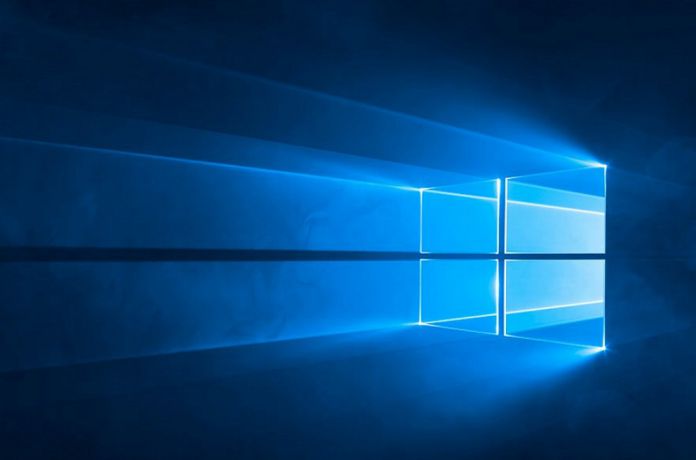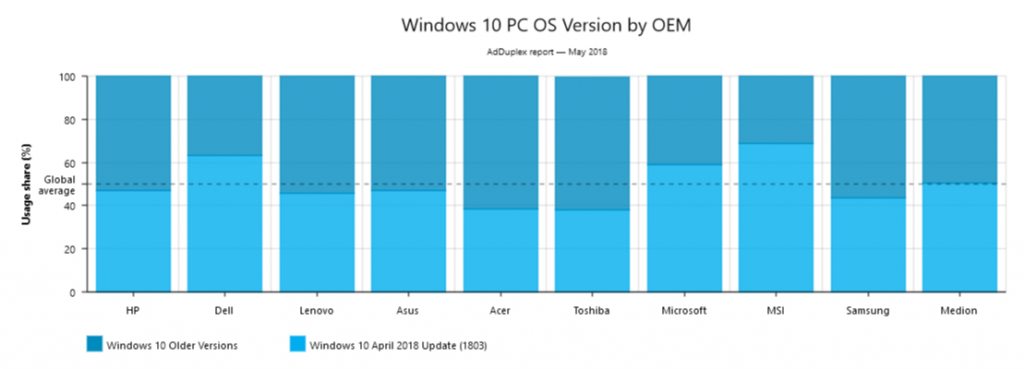According to analytics firm AdDuplex, the update is at 50% market share in just a month. To give some perspective, previous updates have taken between two and three months to reach that milestone. However, it’s more than possible Microsoft has a hand in this, and that may not be to user’s advantage. The update has been made available to users at a faster rate than previous ones and that may be why we’re seeing so many problems.
Shady Tactics
It combines with reports that Microsoft is ignoring preferences to defer upgrades, pushing it to organizations that may not be ready. This paints the unfortunate idea that the statistics are due to shady tactics rather than demand for features. As it stands, the statistics make the April update the most popular, with the Fall Creators update just behind at 43%. However, those numbers begin to change once you drill down by OEM.
As you would expect, users of Microsoft’s Surface line are strong adopters at 59.2%. Surprisingly, though, they aren’t at the top. That accolade goes to MSI at 68.7%, followed by Dell at 63.3%. As you would expect, Toshiba is way behind the average at 38.3%. This is due to significant SSD issues, which led to Microsoft blocking the install for many users. Acer is also low at 38.3% for reasons that are unclear. These statistics are just part of the picture, but they do give an interesting look at Windows 10 adoption. The long-term trend seems to be a much faster rate and it’ll be interesting to see how long it takes for the April update to reach the higher percentages.






